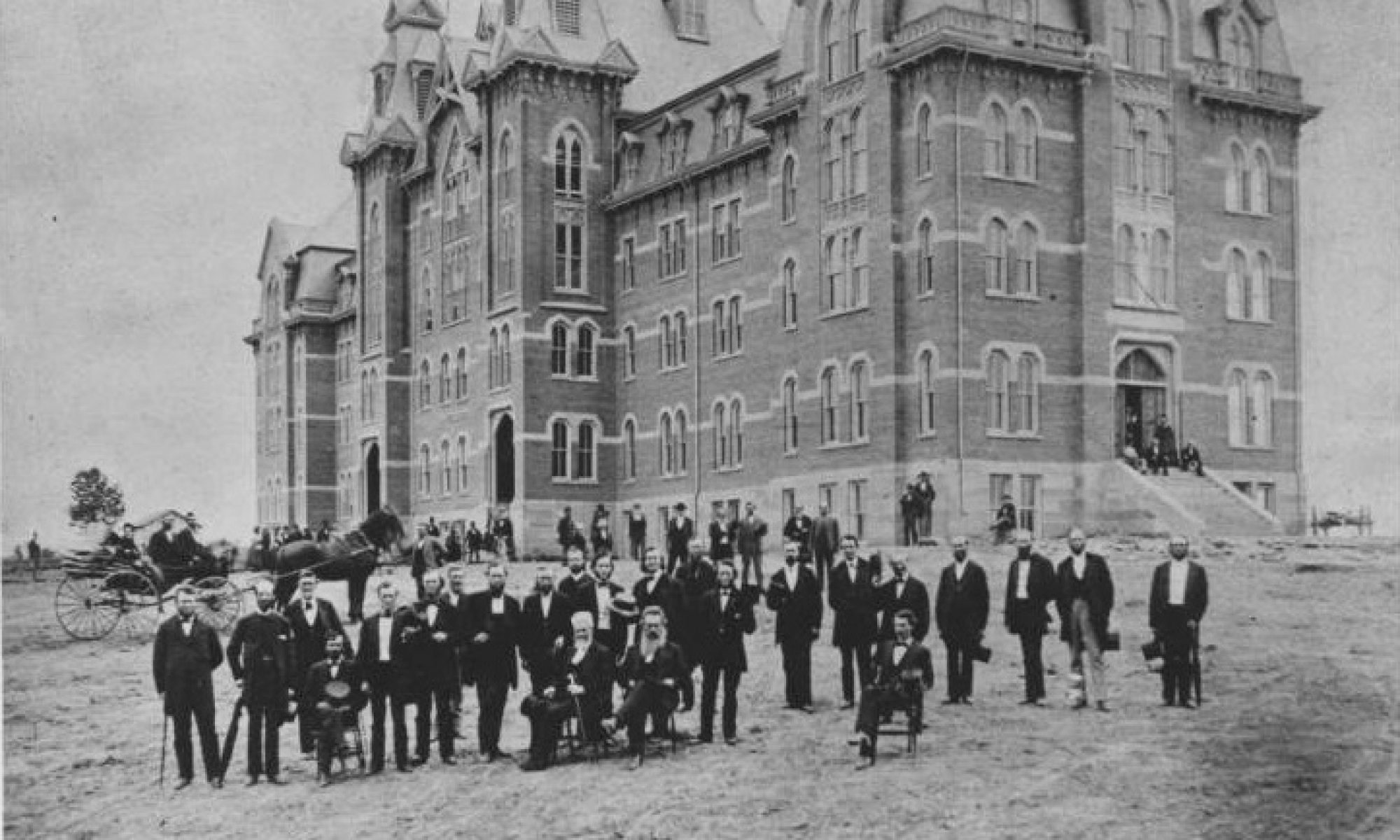Introduction | The Founding | The Founders | The Universalists | The Building | The President and the Faculty | The Students and the Curriculum | The Flourishing
Universalism was founded in Gloucester, Massachusetts in 1770 by John Murray, a pioneer minister from Hampshire, England. Universalists were liberal Protestant Christians who believed in universal salvation and in a single manifestation of the deity. Typically a religion of the middle and lower middle classes, most Universalists were farmers, small tradesmen, or factory workers. Although started in New England, Universalism rapidly spread west. By 1880, Universalism was the sixth largest denomination in the United States. In 1850, there were 163 Universalist churches in Ohio.
The Universalist Church of Akron (now the Unitarian Universalist Church of Akron) holds an important place in the city’s history. According to church history, Universalism was introduced to Akron in 1811 by settler Major Miner Spicer. His log cabin, which stood at what is now the intersection of Exchange and Spicer streets, was the destination of many circuit-riding Universalist ministers. In 1839, a new church building, known as “The Old Stone Church,” was built on North High Street but was sold to the Baptist Society in 1853 due to a severe budget crisis and a shrinking congregation. By some reports, the local Universalist congregation disbanded thereafter.
In 1870, at the Ohio Universalist Convention, prominent Akron businessman John R. Buchtel persuaded the convention to build a denominational college in Akron and funded a large part of the construction. Buchtel College as it became known renewed local interest in Universalism. Being a denominational college, it was closely tied to the Universalist Church. For a time, the Universalist Society re-organized in Akron and met in Buchtel College’s chapel, as many of the young college’s presidents were also Universalist ministers. Although the official alliance between the Universalist Church and Buchtel College ended in 1913 when the college was transferred to the city and became The Municipal University of Akron, many campus leaders continued to play prominent roles in the local Universalist Church.
According to church history, the “golden era of Universalism” in Akron began in 1879 when a new church was built in downtown Akron. In 1961, the Universalists dedicated a “modern” church building in Fairlawn and named Rev. Gordon McKeeman its new minister. That same year, the Universalist Church of America merged with the American Unitarian Association to form the Unitarian Universalist Association (UUA). Two years later, the local church selected its current name, the Unitarian Universalist Church of Akron (UUCA). During the ministry of McKeeman, the congregation became a prominent voice for justice and tolerance in the greater Akron community, a tradition it continues today.

Photograph courtesy of the Summit County Historical Society.
Major Miner Spicer of Connecticut came to Portage Township in 1810 to look at lands he had acquired. He returned the following year with his family and erected a log cabin, which stood at what is now the intersection of Exchange and Spicer streets in downtown Akron. According to church history, the cabin was the destination of many circuit-riding Universalist ministers before the congregation built its first church in 1839. As a result, Spicer is credited with bringing Universalism to Akron.
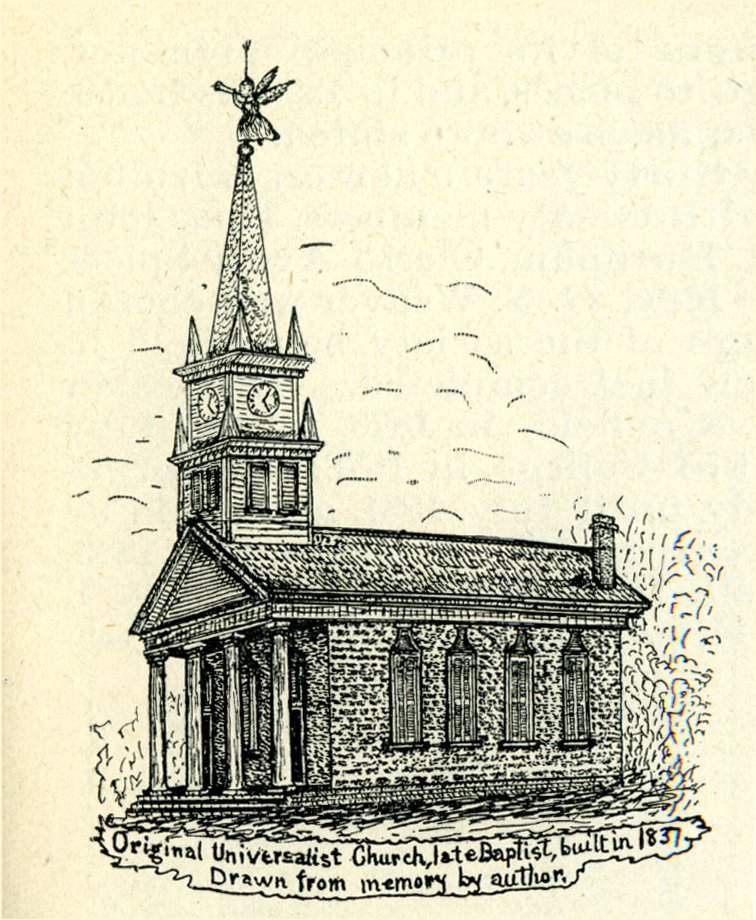
Drawing from Fifty Years and Over of Akron and Summit County by Samuel A. Lane. Image courtesy of the Summit County Historical Society.
“The Old Stone Church,” built in 1839 on North High Street, was the first official home of the Universalist Church of Akron. It was considered by many to be the finest stone church in Ohio at that time. The church was the scene of several historic events, including the 1843 General Convention of the Universalists of America. The great abolitionist leader and former slave, Sojourner Truth, made her famous “Ain’t I A Woman?” speech at the “stone church” during a women’s rights convention in 1851. Because of a severe budget crisis and a shrinking congregation, the “stone church” was sold to the Baptist Society in 1853.
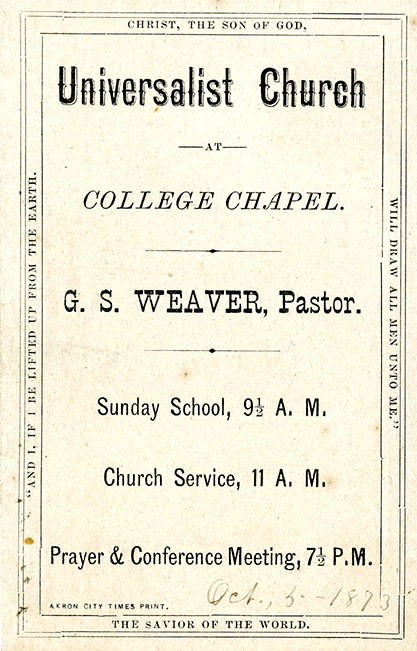
From The University of Akron Vertical File Collection in Archival Services.
Since the local Universalists had a thriving congregation, but no church in the 1870s, they often used the chapel located in the Main College Building (now known as Old Buchtel Hall) to hold services. President Sullivan H. McCollester and four subsequent Buchtel College presidents were also Universalist ministers. They often preached in the chapel to students and members of the local Universalist congregation, and had some obligations to the local Universalist Church.
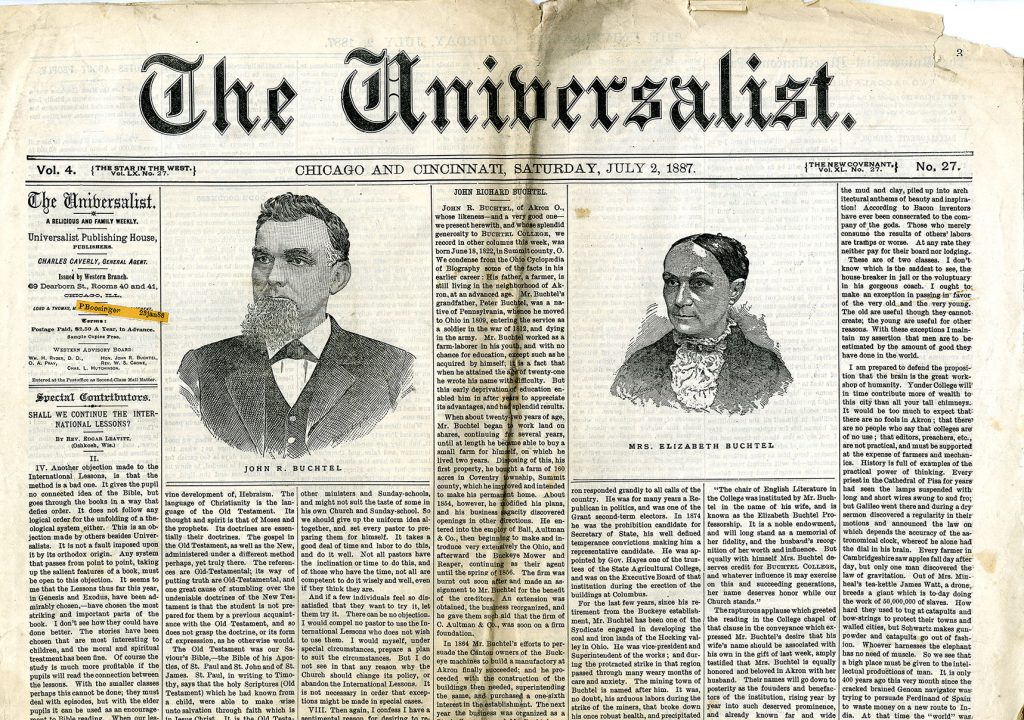
From the Dr. Kathleen Endres Collection in Archival Services.
Two of the most prominent Universalists in Akron and Ohio were John and Elizabeth Buchtel. This Universalist newspaper from 1887 pays homage to the Buchtels and their generous contributions to Buchtel College and the Universalist Church. The article gives much credit to Elizabeth Buchtel, and states that “but equally with himself [Mr. Buchtel] Mrs. Buchtel deserves credit for Buchtel College. . . . Her name deserves honor while our Church stands.” It continues: “Mrs. Buchtel is equally honored and beloved in Akron with her husband. Their names will go down to posterity as the founders and benefactors of the institution.”

From The University of Akron Vertical File Collection in Archival Services.
After the founding of Buchtel College in 1870, Akron became a center of Universalist activity in the state. As this program shows, the Ohio Universalist Convention held their 56th annual session in Akron, 11 years after the founding
of the college. An entire afternoon was dedicated to the state of the college, including a statement by then Buchtel College President Orello Cone. One meeting also focused exclusively on garnering additional financial support for the college from the Universalists.

Photograph from The University of Akron Photograph Collection in Archival Services. Gift of Robert Iredell and family.
This photograph of the congregation of the First Universalist Church of Akron shows many important Akron Universalists and Buchtel College founders, including Andrew Willson (3.), John R. Buchtel (5.), and Rev. Henry L. Canfield (8.), posing in front of the new church at the corner of Mill Street and South Broadway.
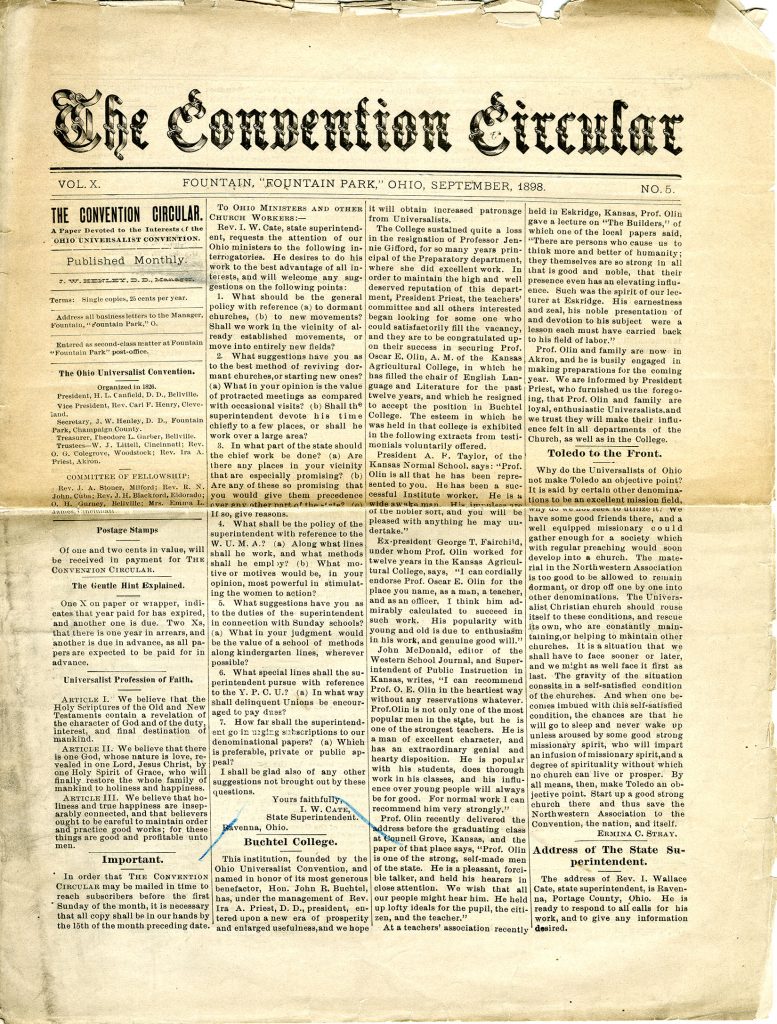
From The University of Akron Vertical File Collection in Archival Services.
At the time the Ohio Universalist Convention founded Buchtel College, Universalism had a strong following in Akron and in Ohio. The Convention Circular was just one of several mediums the Universalist Church used to communicate with their members across the state and the region. This issue, dated 1898, includes an article on Buhetel College. It particularly appeals to the membership to continue to financially support the college and praises President Ira A. Priest for bringing the College “a new era of prosperity.” It also talks about a new addition to the faculty, Oscar E. Olin, who would go on to serve the University with distinction.
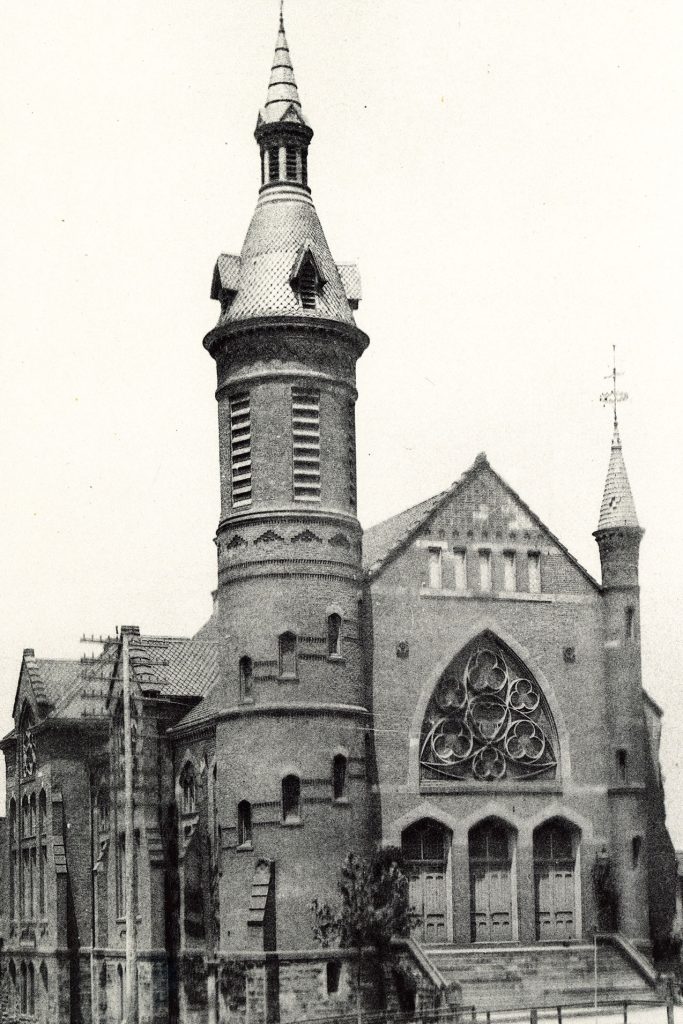
Photograph from Akron Illustrated by H. R. Page & Co. From The University of Akron Archival Services.
This red brick Gothic church built at the corner of Mill Street and South Broadway in downtown Akron was home to the local Universalists for years. The Universalists founded Buchtel College, which would become The University of Akron. Before this church was built, Akron’s Universalists held services in the Buchtel College Chapel located in the Main College Building (now known as Old Buchtel Hall).

